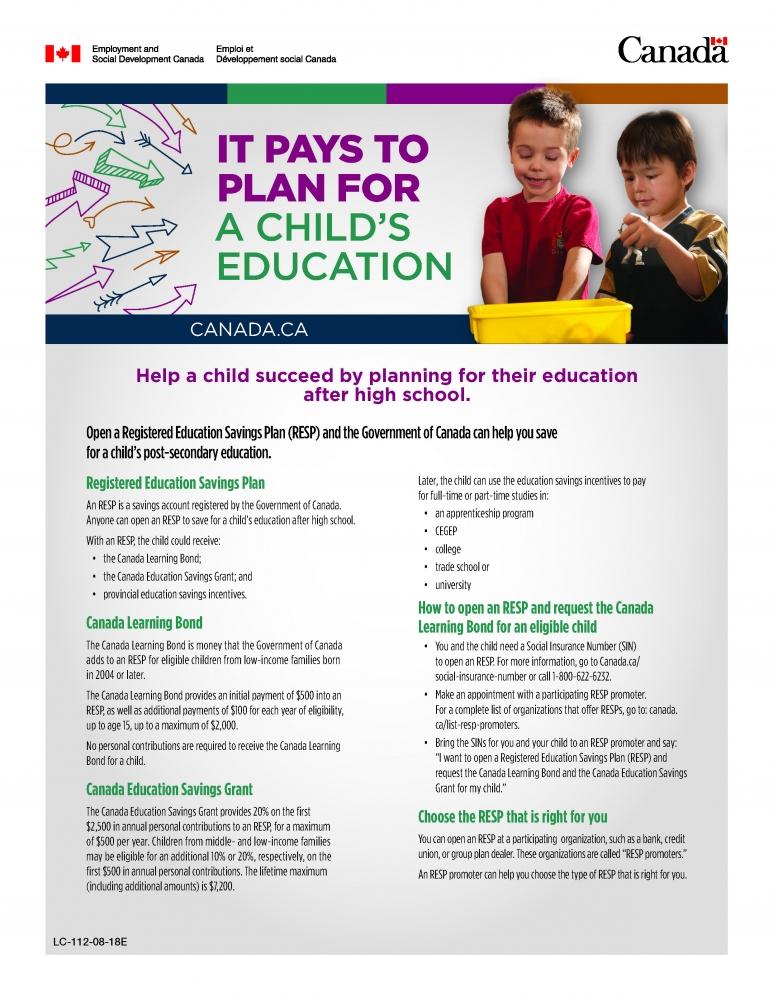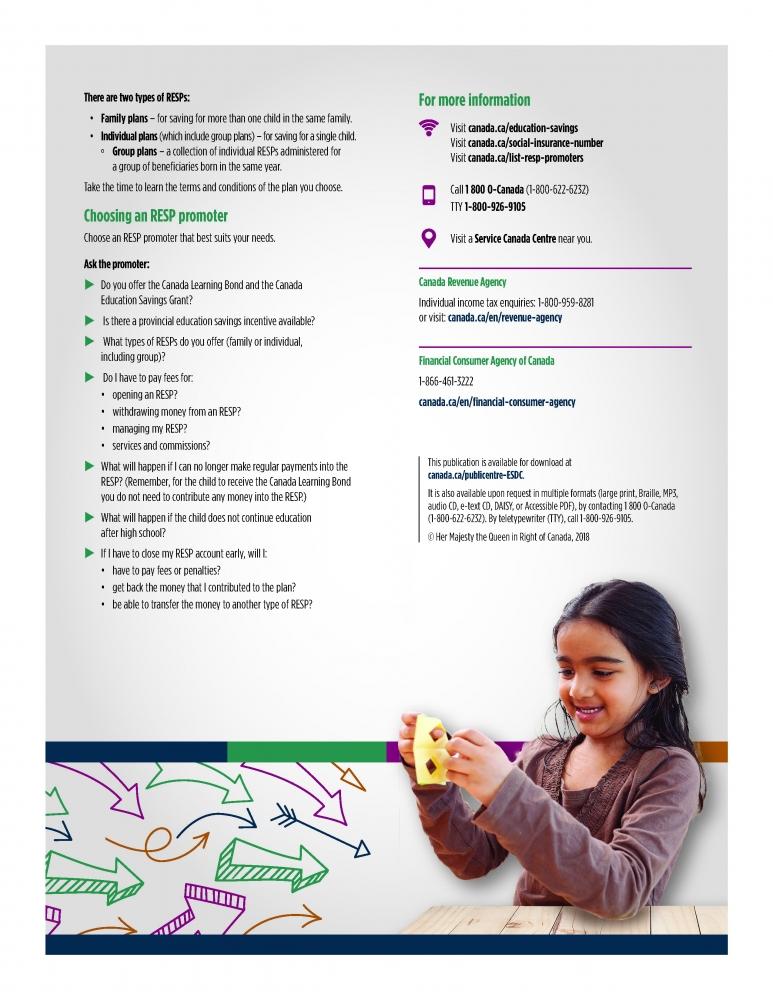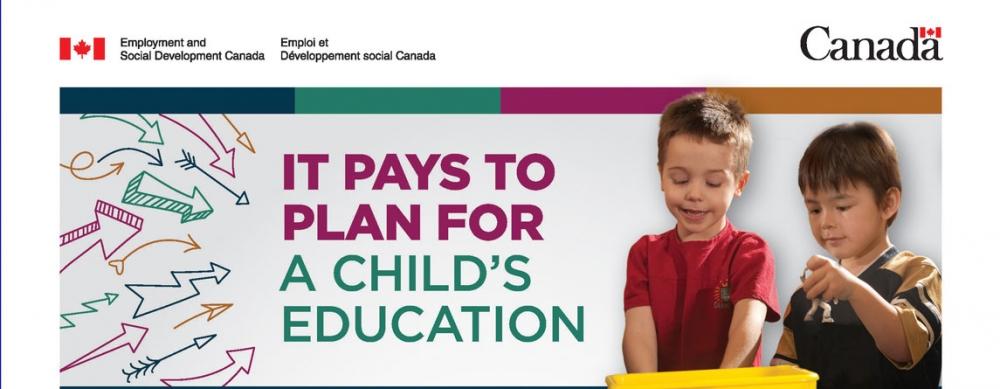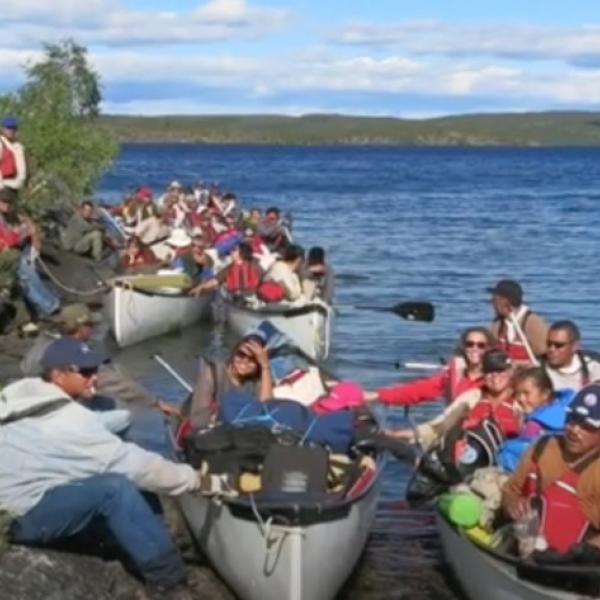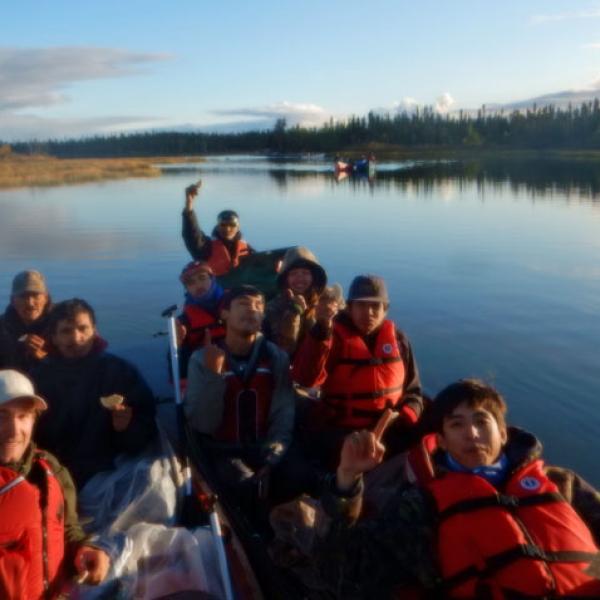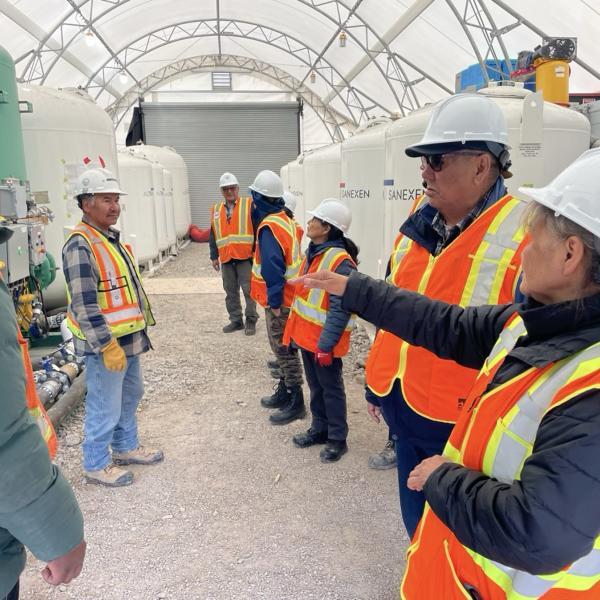Registered Education Savings Plan (RESP)
Planning for a child’s post-secondary education, whether it is in an apprenticeship program, CEGEP, trade school, college or university, can open up a world of opportunities for a child.
To help save for a child’s future studies, the Government of Canada provides two education savings incentives, which are deposited into a Registered Education Savings Plan (RESP).
• The Canada Education Savings Grant (CESG) consists of a basic amount of 20% on the first $2,500 in annual personal contributions to an RESP (this grant is available to all eligible beneficiaries regardless of family income), as well as the additional amount of Canada Education Savings Grant, which is:
a) 10% on the first $500 of annual personal contributions for children from families with an adjusted income greater than $46,605 and up to $93,208; or,
b) 20% on the first $500 of annual personal contributions for children from families with an adjusted income of $46,605 or less.
CESG is available until the end of calendar year in which the beneficiary turns 17, and the maximum lifetime amount, including the additional amount of Canada Education Savings Grant, is $7,200.
• The Canada Learning Bond (CLB) is available for eligible children from low-income families born in 2004 or later and provides an initial payment of $500 plus $100 for each year of eligibility, up to age 15, for a maximum of $2,000. Personal contributions are not required to receive the CLB.
RESPs are the only savings vehicle that attract the federal and, where applicable, provincial education savings incentives. The money saved in an RESP is not only used to help with tuition, but can also be used to pay for housing, transportation and other education-related expenses, such as textbooks, equipment, supplies, etc., once enrolled in post-secondary education.
While evidence indicates a general familiarity with RESPs among families, research suggests there is a low level of awareness of the education savings incentives; particularly, among low-income families, Indigenous Peoples, newcomers to Canada, and those living in rural and remote communities. As such, many eligible children have not received the CLB. In 2017 in the Northwest Territory alone, 4,777 eligible children have yet to receive the incentive. Therefore, we are seeking your help to increase awareness to those that can most benefit from the information.
To this end, the fifth annual Education Savings Week (ESW) will be celebrated this year from November 18 to 24, 2018 under the theme: “Start good habits early”. ESW provides an opportunity to promote the benefits of early education savings in RESPs, and to raise awareness of the education savings incentives. As well, 2018 marks the 20th anniversary of the CESG: since 1998, almost 6.04 million children have received 11.5 billion dollars in CESG to help make post-secondary education more accessible.
As part of ESW, there will be a number of communications and outreach activities taking place across the country that are planned and organized by local community-based organizations. We encourage you to help raise awareness of the importance of RESPs and the CLB in helping make post-secondary education more accessible, particularly for children from low-income families.
Help promote ESW by posting information on your website, liking, retweeting and sharing content on social media, and disseminating information through your communication channels and networks. Partner organizations will be making use of the hashtags #EduSaveWeek and #SemaineEpargneEtudes to post and share information and resources.
To further support information sharing, please find attached resources, including:
For additional information on RESPs, the CLB, and the CESG, please consult: Canada.ca/educations-savings, or to discuss how your organization can help promote ESW, please contact:
